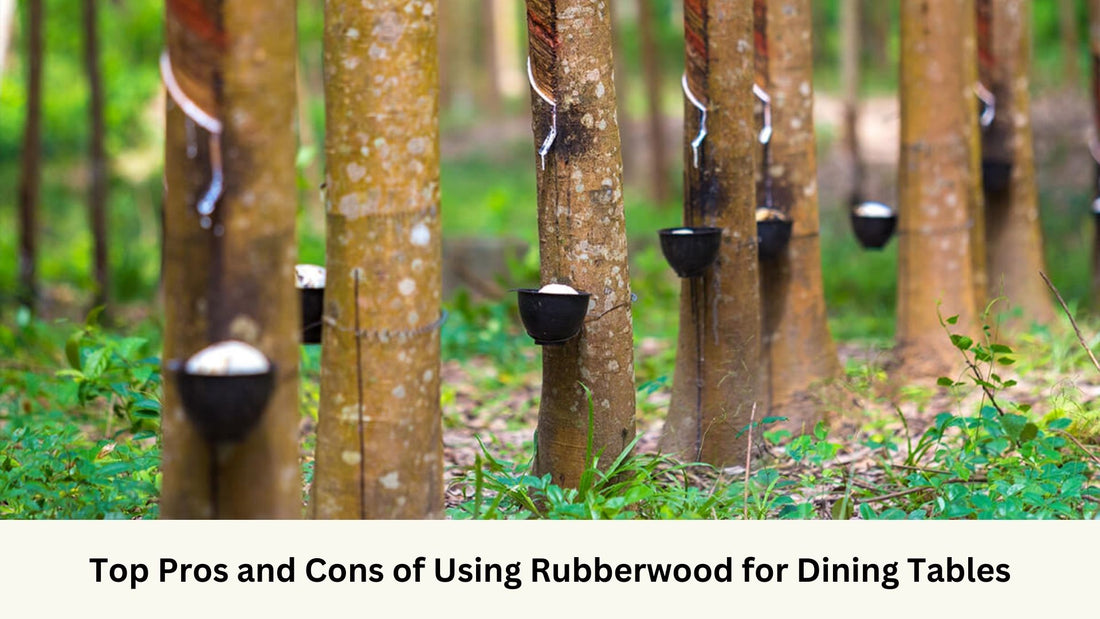
Top Pros and Cons of Using Rubberwood for Dining Tables
Share
When it comes to choosing the perfect dining table for your home, there are a plethora of options available. One material that has gained popularity in recent years is rubberwood. But what exactly is rubberwood, and is it the right choice for your dining table? In this blog post, we will explore the top pros and cons of using rubberwood for dining tables, so you can make an informed decision.
What is Rubberwood?
Rubberwood, also known as parawood or Asian hardwood, is derived from the rubber tree (Hevea brasiliensis). It is a sustainable and eco-friendly material, as it is harvested from rubber plantations after the trees have completed their latex-producing cycle, typically around 25 to 30 years. Instead of being discarded, the timber from these trees is used to create a wide range of products, including dining tables.
The Pros of Using Rubberwood for Dining Tables
1. Sustainability: Rubberwood is an environmentally friendly choice, as it utilizes a byproduct of the rubber industry that would otherwise go to waste.
2. Durability: Rubberwood is known for its strength and durability. It is resistant to warping and cracking, making it a long-lasting option for your dining table.
3. Affordability: Compared to other hardwoods, rubberwood is relatively affordable, making it an attractive option for those on a budget.
4. Versatility: Rubberwood can be easily stained or painted to match any interior style or color scheme, allowing for endless design possibilities.
5. Resistance to Decay: Rubberwood has a natural resistance to decay, making it less prone to damage from moisture or insects.
The Cons of Using Rubberwood for Dining Tables
1. Susceptibility to Scratches: While rubberwood is durable, it is not completely scratch-resistant. Care must be taken to avoid scratching the surface of the dining table.
2. Susceptibility to Stains: Rubberwood is porous, which means it can absorb liquids and stains more easily than other hardwoods. Prompt cleaning is necessary to prevent permanent stains.
3. Color Variation: Rubberwood has a light, pale color that may not appeal to those who prefer darker or richer tones for their dining table.
4. Limited Availability: Rubberwood is not as widely available as other hardwoods, which may make it more challenging to find the perfect dining table in this material.
5. Sensitivity to Heat: Rubberwood is sensitive to heat and may develop burn marks or discoloration if hot objects are placed directly on its surface. The use of coasters or trivets is recommended.
Ultimately, the decision to use rubberwood for your dining table depends on your personal preferences and needs. It offers sustainability, durability, affordability, and versatility, but it also has its limitations. Consider the pros and cons outlined in this blog post to make an informed choice that aligns with your lifestyle and aesthetic preferences.
Published: 25th May 2024
